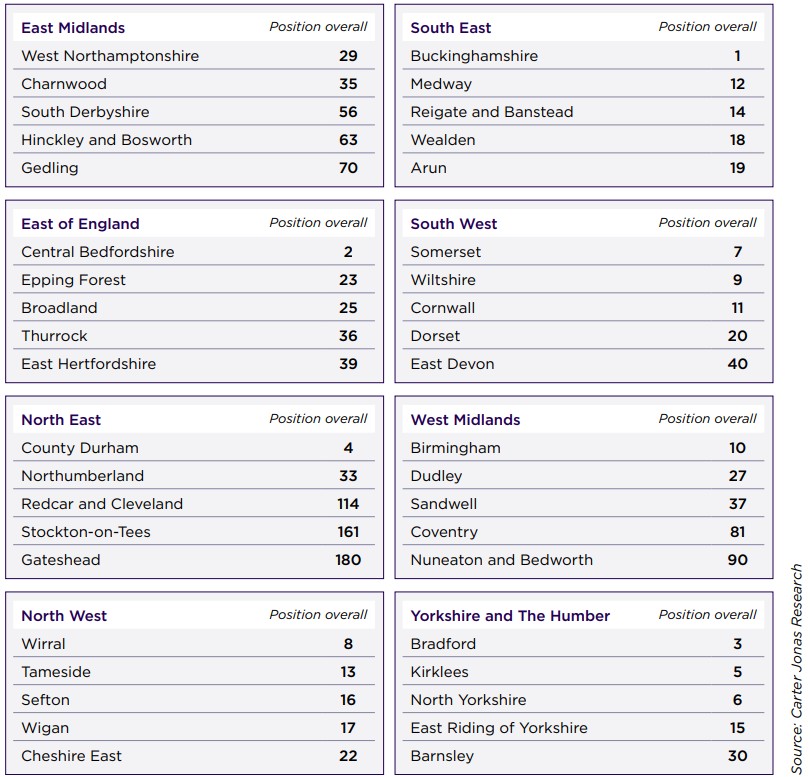A new report by national property consultancy Carter Jonas has identified 12 of the most suitable locations in England for the delivery of future new towns ahead of recommendations expected from the government’s New Towns Taskforce.
The research, New Towns: Foundations, Futures & Finances, presents a data-led shortlist of locations based on population growth forecasts, housing need, transport links, employment and land availability.
The report also raises questions about the government’s current target size for new towns.
While the New Towns Taskforce has proposed a minimum of 10,000 homes per site, Carter Jonas argues this may fall short of what is needed to deliver the infrastructure, services, and employment required for genuine placemaking.
CAPACITY AND POTENTIAL

David Churchill, Partner in Planning and Development at Carter Jonas and co-author of the report, said: “The top 12 regions have been identified on the basis of both capacity and potential – places where demand for housing is high, but where there is also scope to grow employment, improve infrastructure and rebalance affordability.”
And he added: “But perhaps one of the most surprising findings is that if the locations were determined based on the criteria used in our research, the East Midlands is unlikely to be chosen. In contrast, the South West would see the establishment of three new towns, as would Yorkshire and the Humber.”
THINK BIG

Francis Truss, Partner at Carter Jonas, said: “To deliver effective new towns along the lines of Milton Keynes or Stevenage, the government must think big.
“This requires planning on a commensurate scale: regional, rather than local.
“It is the absence of strategic planning frameworks that led to the failure of many recent new town proposals, such as the Eco Towns and Garden Villages.
“Regional planning is imperative to allow cross-boundary coordination and avoid local politics stalling development.”
STRATEGIC AUTHORITIES
Truss also welcomed the government’s recently announced English Devolution and Community Empowerment Bill, which proposes the creation of 33 new single-tier strategic authorities by 2030.
These bodies, he said, could provide the structural foundation to support long-term, large-scale development.
He added: “Combined authorities such as Greater Manchester and the West Midlands have already demonstrated how integrated planning across transport, infrastructure and housing can support regeneration and economic growth.
“The proposed strategic authorities could go further still, especially if they are equipped with the right powers and incentives.
“Development Corporations, Mayoral Development Corporations are all tools that could help strategic authorities assemble land and deliver long-term infrastructure.”
LONG-TERM COMMITMENT
Churchill concluded that the government’s ambition is achievable – but only if backed by strategic clarity and long-term commitment.
“The government’s ambition to deliver 12 new towns is both timely and welcome, but must be underpinned by strategic clarity and a willingness to learn from the past.
“New towns have a proud legacy in England. They delivered places that work – not just housing, but communities with schools, transport and employment. We can do this again. But only if we plan with consistency, think at scale, and commit for the long term.”
TOP 12 AREAS IDENTIFIED
- Buckinghamshire
- Central Bedfordshire
- Bradford
- County Durham
- Kirklees
- North Yorkshire
- Somerset
- Wirral
- Wiltshire
- Birmingham
- Cornwall
- Medway
TOP FIVE RANKINGS BY REGION






